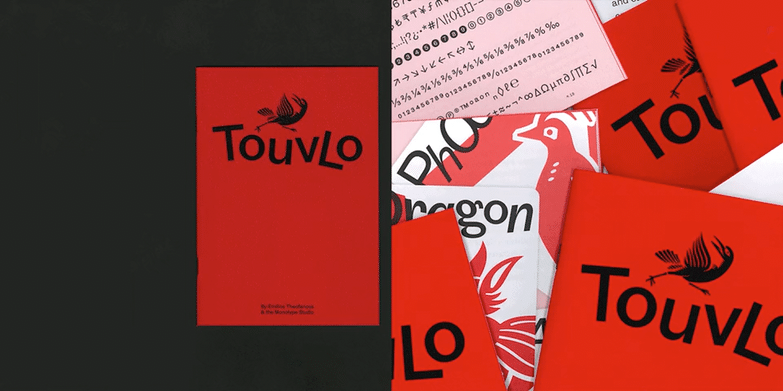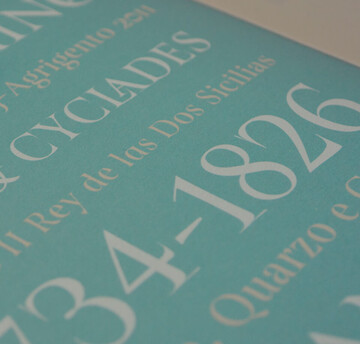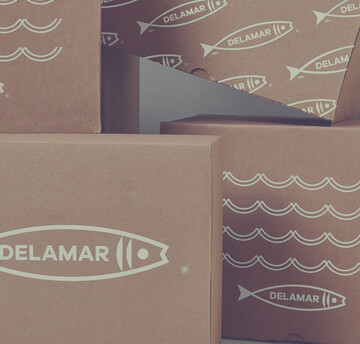4 tips for being more sustainable when you design.

When it comes to building a sustainable brand, success really comes down to one word: authenticity. Promoting your brand as sustainable is one thing, but walking the walk is another – and customers know the difference.
Just think about Patagonia founder Yvon Chouinard, who recently donated the apparel company, valued at an estimated $3 billion, to an environmental nonprofit to help fight climate change. This is a change that garners respect from customers, as opposed to carbon offsets, which customers recognize are a publicity sham.
Over the past five years, there has been a 71% increase in online searches for sustainable goods globally, and 66% of consumers surveyed consider sustainability when they make a purchase. Profit, these days, is inherently linked with sustainability.
If you work for a brand that values sustainability, how can you tell that story through design? Whether you work for a certified B Corp or a brand that’s just getting started on the sustainability journey, here are 4 ways you can be more sustainable when you design:
- Have a transparent conversation with the brand about the carbon footprint of their designs
Brands often have good intentions, but don’t know how to put them into practice. As a designer, you can educate brands about their impact by proposing design solutions that have a minimal carbon footprint. For example, to reduce materials used, you can make mailing promos that also act as self-folding envelopes or leave a white border around your poster design to reduce ink waste from bleeded edges.
While brands may have an internal policy where they donate a certain percentage of their profits to charitable organizations or choose to plant trees to replace the paper products they use, the real change starts with long-term practices. Brands can establish a code of conduct to develop sustainability on a supply chain level. There are many resources brands can look to, from the 10 United Nation Guiding Principles to the standards outlined by the International Labour Organization.
- Minimize the brand’s environmental impact through sustainable packaging.
If you’re designing for a brand that creates physical products, you can encourage them to minimize their paper waste with practices like maximizing the whole page when printing and incorporating ink-saving fonts, specialized fonts that require less ink to print. So, what is the best sustainable font for saving ink? Times New Roman, Ryman Eco, and Century Gothic are all considered eco-friendly fonts for printing due to their thin lettering, which minimizes the amount of ink needed. Ryman Eco is a particularly unique option because it uses 33% less ink than standard fonts. Another good example of how fonts can cut down on costs can be seen with the typeface Garamond, which due to its thinner strokes, could reduce ink use by 24% and save an estimated $21,000 annually for a school district.
You can also encourage brands to use sustainable design in their shipping packaging. Opt for packaging that’s reusable or made from recycled paper to be easily broken down. It’s important to make sure the materials used can be easily recycled – especially since 67% of consumers consider it important that the products they buy are in recyclable packaging.
- Encourage sustainable digital design through compressed fonts.
To be more environmentally friendly, we can start thinking about opportunities to make our digital world more sustainable. The internet uses 1 billion tonnes of greenhouse gasses a year and is responsible for 2% of global emissions (a larger carbon footprint than the aviation industry), so even small steps to encourage sustainable digital design are a step in the right direction. As a designer, you can improve your digital design by using sustainable fonts including compressed fonts, variable fonts, and micro type.
Why use compressed fonts? They have faster font load times, boosting website load speeds as well. This is not only more environmentally friendly but also crucial to maintaining your customers; the probability of bounce rate increases 123% if a mobile page load time increases to 10 seconds. You can also switch to variable fonts to increase the page load speed. You’ll only have to download one font file, but have access to thousands of combinatios of weights and styles. In fact, compressing images and text just on 25% of pages could save more than 250KB and 10% can save more than 1MB.
You can also use “micro type,” a font typically under 10 in point size which can be used for “micro type” environments including package labeling, eBooks, or smart watches. If you do opt for micro type, make sure you optimize for micro settings to improve legibility. The big benefit of having a highly legible micro type is that it allows you to have increased confidence in switching to digital. To find a micro type that works for you, try sourcing a font type from a font portal.
- Accept the small wins and recognize that there’s room for improvement.
When designing for brands, it’s important to celebrate each step toward sustainable practices. Sometimes, that’s as simple as sharing lessons learned and how they will make a change. Ace & Tate eyewear recently became a B Corporation, a private certification of the company’s “social and environmental performance. In doing so, Ace & Tate shared a post explaining the lessons the design team learned the hard way, from setting an unrealistic carbon goal to overlooking their social impact. This post created brand authenticity and a level of transparency with customers. As a B Corp, Ace & Tate ensures the supply chain partners they work with comply with a Code of Conduct (based on the UN’s Guiding Principles) and researches the environmental footprint of materials before production.
Paving the way towards a sustainable future
Practicing sustainable design is no easy feat. Change requires time and long-term efforts to make an impact. While many brands may think that sustainability comes with an added price tag, it doesn’t have to come at a cost. Sustainability can be baked into brand design through the use of compressed fonts, well-thought-out digital design, and minimal packaging from ethical suppliers. Having a go-to font library where you can quickly source licensed, low-impact sustainable fonts can make the design process that much easier.
As you think about designing for good, recognize the role you play. As a designer, you have an opportunity to help educate brands on positive impact conversations when you receive a project brief. You have the power to make the world a better place through your design practices.











